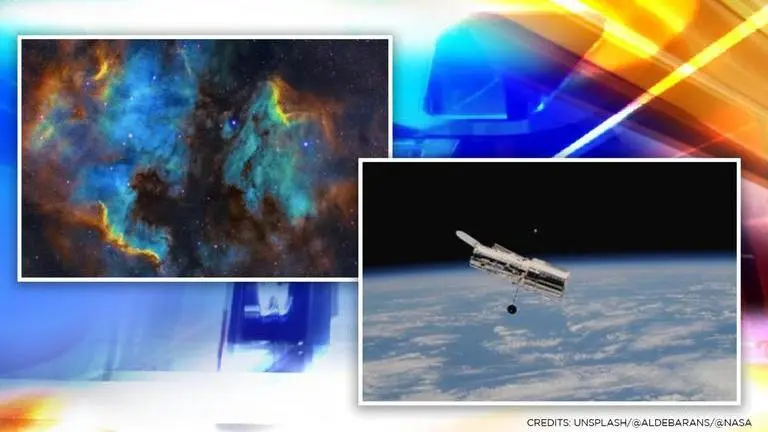Updated 16 May 2021 at 14:10 IST
NASA shares iconic image of cosmic cloud's silver lining 'emission nebula NGC 2313'
“Nebulae with similar shapes were once called cometary nebulae because star with an accompanying bright fan looked like a comet with a bright tail,” said NASA.
- Science News
- 2 min read

NASA on Saturday shared mesmeric imagery of emission nebula NGC 2313 located approximately 3,756 light-years away in the constellation of Monoceros. Captured by NASA/ESA Hubble Space Telescope, the nebula also dubbed as the LDN 1653 or the Parsamyan 17 was first discovered on January 4, 1862, by a German astronomer Heinrich Louis d’Arrest. According to NASA, the bright nebula NGC 2313 is energized by a relatively younger intermediate-mass star known as the V565, which can be seen shining vibrantly in the center of the Hubble’s image. The star V565, according to the astronomers, is a fan-shaped veil of gas and dust, while the right half of this image is obscured by a dense cloud of dust.
“Nebulae with similar shapes were once called “cometary nebulae” because the star with an accompanying bright fan looked like a comet with a bright tail,” said NASA in a release, sharing the stunning photograph. It is surrounded by nearly four bright diffraction spikes. Such stars accompanied by the intense fan of gas were referred to as cometary nebulae in the astronomical journals. Although, the term is less frequently used now. "The language that astronomers use changes as we become better acquainted with the universe, and astronomical history is littered with now-obsolete phrases to describe objects in the night sky, such as “spiral nebulae” for spiral galaxies," NASA explained. It added, “V565 is surrounded by four prominent diffraction spikes and illuminates a silvery, fan-shaped veil of gas and dust, while the right half of this image is obscured by a dense cloud of dust,” the astronomers informed.
Captured by Hubble's ACS instrument
The image of the NGC 2313 was taken by Hubble’s Advanced Camera for Surveys (ACS) instrument in the near-infrared and optical parts of the spectrum. A wide-V (F606W) filter and the near-infrared (F814W) filter was used that resulted in capturing an iconic picture of the nebula with its hues standing out and colours split distinctly. “Gorgeous, isn’t it? Hubble, we love you,” wrote NASA in an Instagram post. The astrophiles dropped a slew of comments on the spectacular photograph. “Wow so cosmic,” one wrote. “Beautiful image from Hubble,” another wrote. “That looks so pretty,” meanwhile one other said.
Published By : Zaini Majeed
Published On: 16 May 2021 at 14:10 IST


